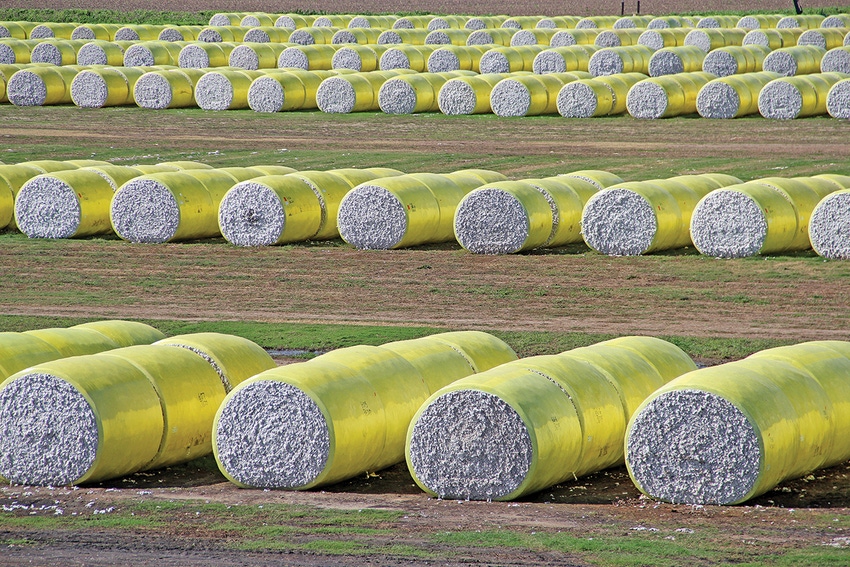
To help growers and landowners get a jump on the new seed cotton program, the LSU AgCenter has been holding workshops around Louisiana. To assist those efforts, a set of online tools are also available.
In mid-August, Mike Deliberto, LSU AgCenter economist, spoke with Delta Farm Press. Among his comments:
On the interest of cotton farmers…
“We’ve started to conduct workshops around the state. Those presentations pertain not only to the seed cotton program choice, ARC/PLC, but also the issue of generic base reallocation or conversion.
“We have a lot of farms in Louisiana that are almost entirely, 100 percent, generic base. Those farms are faced with decisions. Do they covert to the seed cotton base? Should they reallocate their bases to other covered commodities that they’ve been planting between the 2009/2012 window?
“So, we wanted to start a series of program workshops in the cotton-producing regions of the state — southern, central and the northeast. At those, we provide producers information with handouts. We go into the programmatic overview of the program — why it was created and what it means for cotton.
“Then, we get into the decisions they’ll be faced with. How should you update program yields? How does the generic base reallocation process work?
“We then break it down with some Microsoft Excel-based tools on our website for download. They can put their own yields into those, relative to their particular parish. We have some PLC payment matrixes where they can put in a lint and seed price and they can see what the PLC payment rate will be over a range.
See also: Looking for help with cottonseed program decisions?
“The more you can get growers and landowners involved in what they need to know, the better. They can see it in black-and-white or in a presentation, but if you have a computer there it really helps. ‘This is the information you need to put into these tools and these are the options you’re going to have.’
“Growers might want to look at reallocating base to maximize program payments. What kind of price and yield are you putting into the tool? Even though we’ve tried to minimize the amount of data entry producers have to put into the decision tools, we want to stress the importance of what sort of information or estimate are you using for that price? Or that yield benchmark for your parish or county? Is it the latest USDA WASDE figure or is it a range of cottonseed prices from the National Cotton Council? What type data are you putting into the model so you can formulate a realistic payment projection?
“We’ve had great success with this approach. The phone keeps on ringing, so that’s a good thing.
“I know this: producers are very appreciative the new deadline for sign-up is now Dec. 7. There was a lot of anxiety back in mid-July when people thought they’d have to make these decisions during the summer.”
On the complexity of making decisions…
“There are multiple variables that must be considered when evaluating potential payments for the ARC-CO program (prices and parish-levels yields by practice).
“I think producers largely understand the mechanics of ARC and why payments were higher at the front end of the farm bill and forecasted lower for the 2017/2018 year. But it’s our job to deliver information they can use, provide tools they can access online. And they can contact us with questions ([email protected]) and we’re happy to walk them through the steps.
“Doing this, I’ve met great people and they’re open to the ideas we lay out. Even with corn harvest starting, attendance at the workshops has been really good. We also have a great system of county Extension agents who help relay information back and forth.”
Can the tools on the LSU AgCenter website be used across the Cotton Belt?
“The program yield is specific for Louisiana. We put the substitute PLC yields in our decision tools. Go to the ‘Seed Cotton Program Payment Yield Update Tool’ and there’s a report that’s a generic tutorial showing how the program works.
“But for Louisiana producers, there’s a drop-down menu so producers can select their parish and their plug yield automatically comes into the equation. So, it can be used by a cotton producer from Evangeline Parish all the way up to West Carroll Parish.
“The PLC payment matrix we have can be used across the Cotton Belt. That’s triggered on national prices. We ask the producer to input their payment yield, the total production of lint and seed. From that, the matrix calculates what the PLC payment rate is per base acre.”
On common questions…
“Since one of the first meetings we’ve held since February, one common scenario we’ve been presented with is: ‘I have the opportunity to reallocate my generic acres for the 2018 crop year. I’m not going to get the opportunity to reallocate those base acres again with the next farm bill, right?’
“The answer is, ‘no’. The base allocation, the way your farm is constituted now is what you’ll have going forward.
“Another question: ‘I want to put corn in the PLC program if I reallocate. But if I already selected it for ARC back in the 2014 sign-up that choice has already been made for cover commodity protection?’
“I think producers are aware of the fact that decisions made in 2014 — in terms of putting corn and soybeans in ARC and grain sorghum in PLC — are already set. If you have the opportunity to reallocate some of that generic base to corn, soybeans or sorghum, you don’t get to pick what program to put those crops in.”
About the Author(s)
You May Also Like




